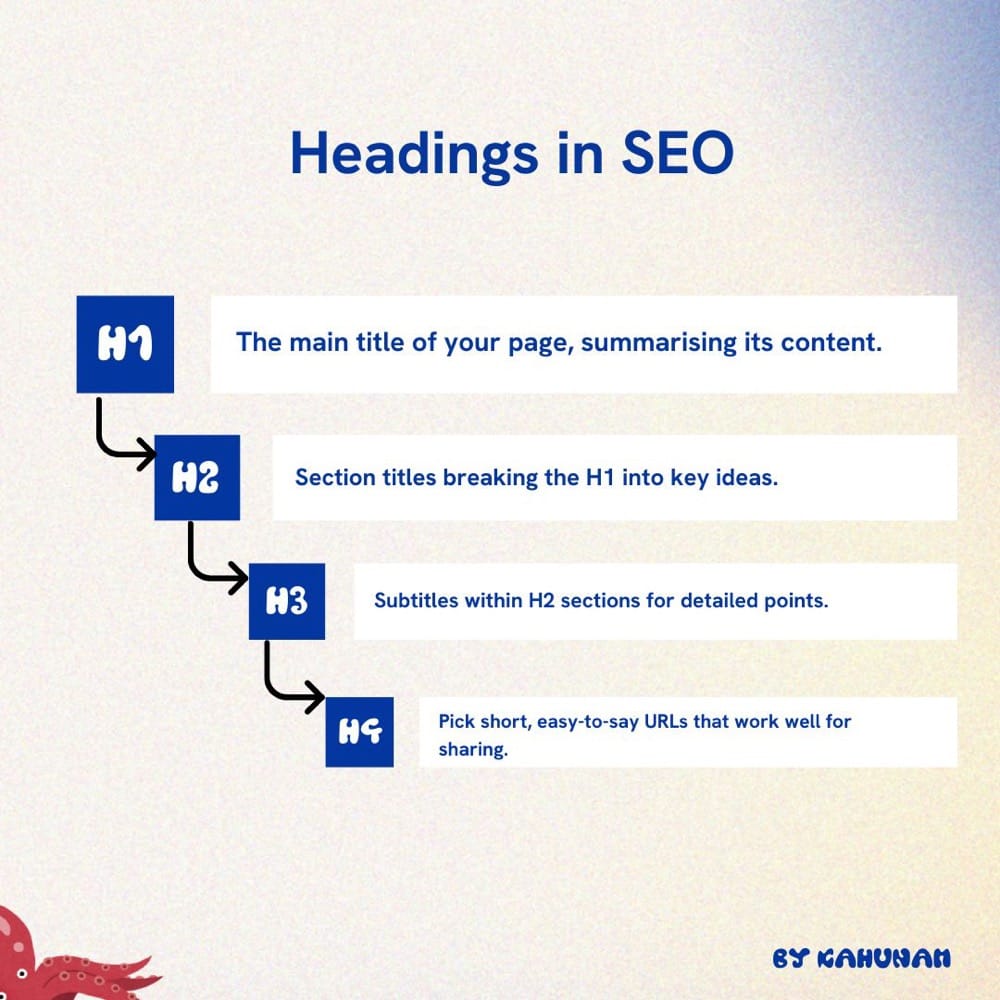Fixing headings is one of the key on-page optimisation practices in SEO. A well-structured article is essential for helping search engines understand your content. However, simply organising your heading structure won’t instantly improve your site’s ranking on Google. So, how do headings impact your SEO, and why won’t fixing them alone significantly boost your site’s ranking? We’ll answer these questions in this article.
The role of headings in SEO
First of all, let’s have an understanding of headings in SEO.
Headings (like H1, H2, and H3) help create a clear structure for your content, which is helpful for both search engines and readers.
H1: This is usually the main title or theme of your page, giving an idea of what the content is all about.
H2: These are section titles that break down the H1 topic into key parts or ideas.
H3: These tags go further into detail within the H2 sections, helping explain specific points.
H4, H5, and H6: These aren’t used as often, but they’re there for breaking down more detailed sections if needed.
While they don’t hold the ranking power they used to, well-organised headers improve readability, user experience, and accessibility.

Headings are organised in a specific order from H1 (the main heading) down to H6. This setup shows the importance of each section, with H1 as the most significant, setting the page’s topic, and H2, H3, and so on representing the sections within it. It’s generally best to have only one H1 tag per page to keep things clear. This organised structure makes it easier for both visitors and search engines to follow your content. If you want to know more about the standard of heading elements, read the technical specifications heading instruction from World Wide Web Consortium (W3C).
What Google says about headings and ranking
Heading elements were once a critical ranking factor in the early days of Google. However, by 2005, their impact had significantly diminished, and they evolved to become signals indicating what a section of a webpage is about. Having disordered headings, such as placing H4 before H1, H2, or H3, may not necessarily harm your SEO.
Google’s recent guidance suggests that while headings help to organise content, they don’t directly influence rankings. Instead, Google recommends focusing on high-quality, relevant content rather than technical elements like headings. Consider headings as an organisational tool that enhances the user experience, rather than a means to boost rankings.
In conclusion
To achieve the best SEO results, you should take a holistic approach. This means combining well-structured headings with other important elements like quality content, good site speed, and a mobile-friendly design. While headings are significant, remember that they are just one piece of the SEO puzzle.
Additionally, quality content should always come first. Headings alone won’t improve rankings if the content isn’t useful, accurate, or engaging. Focus on creating valuable content, and use headings to organise and support that content in a clear and easy-to-follow manner.





